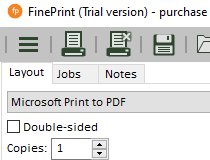

Often the interest rates, fees and loan limits depend on the credit history of the borrower and co-signer, if any, and on loan options chosen by the borrower such as in-school deferment and repayment schedule.A loan with a relatively low interest rate but high fees can ultimately cost more than a loan with a somewhat higher interest rate and no fees. The fees charged by some lenders can significantly increase the cost of the loan.Undergraduate students should also compare costs with the Federal PLUS Loan, as the PLUS loan is usually much less expensive.They should also file the Free Application for Federal Student Aid (FAFSA), which may qualify them for grants, work-study and other forms of student aid.There’s no guarantee you’ll qualify for that rock-bottom rate, even with a co-signer. Keep in mind that the terms offered in big, bold letters are probably reserved for people with squeaky-clean credit.A repayment fee kicks in when it’s time to start paying on your loan. Does the loan charge a disbursement fee or a repayment fee? A disbursement fee is a fee that’s charged once your student loan check is cut.What kinds of interest rates are available? Be sure to study the fine print of each and every deal.Having a co-signer who is a longtime bank customer may land you a lower rate on your loan.

You’ll also want to check to see if your parent’s bank offers private education loans.Some financial aid departments list private loan information online. Don’t forget to check your university’s Web site.All you have to do is type in “private education loan” on any search engine and a whole slew of lenders will pop up. As a general rule, students should only consider obtaining a private education loan if they have maxed out the Federal Stafford Loan.


 0 kommentar(er)
0 kommentar(er)
